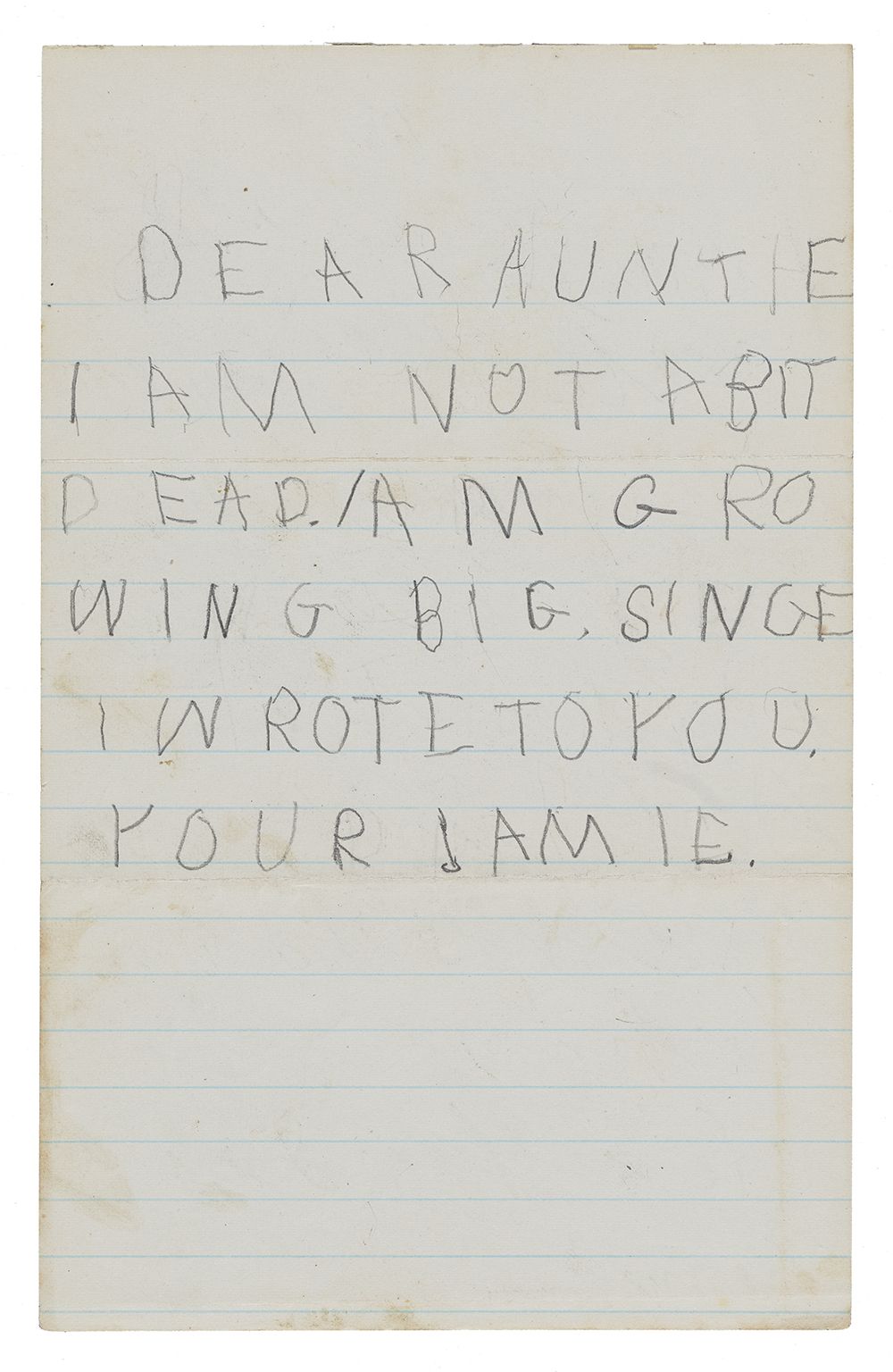Letters to Cecilia Beaux From Her Young Nephews Reveal Sweet Relationship
Letters from Cecilia Beaux’s young nephews reveal their own family gossip and sweet childhood stories.
:focal(425x358:426x359)/https://tf-cmsv2-smithsonianmag-media.s3.amazonaws.com/filer_public/70/b8/70b8c03f-0f83-4afe-afb9-5fd5e1b1f5b0/pafa_beaux_les-darniers-jours-d-enfance.jpg)
In a lecture on portraiture given at Simmons College on May 14, 1907, American artist Cecilia Beaux (1855–1942) stated, “The painter’s art must be powerful—magnetic enough to make us linger over a simple reserved rendering of an aspect of a person we do not know,—have never seen and perhaps would not have noticed if we had seen.” While writing my senior thesis at Vassar College on Cecilia Beaux, I witnessed her artistic power as I became captivated by a simple portrait of a son sitting in his mother’s lap.
This portrait, entitled Les derniers jours d’enfance, was shown in the 1885 exhibition at the Pennsylvania Academy of the Fine Arts, and it is remembered as Beaux’s first notable success of her decades-long artistic career. At first glance, the subject of Les dernier jours d’enfance may be a common one of a mother and son—both reminiscent of the tradition of Madonna and Child iconography and appropriate for the “feminine” subject matter commonly depicted by other women artists at the time, such as Mary Cassatt. However, a deeper meaning in Beaux’s choice of subject is revealed through her letters in the Archives of American Art.
Beaux’s close relationship to her family is made clear in one folder of letters that I find particularly interesting—a collection of more than sixty letters written to her by her very young nephews Henry (Harry) and James (Jamie). The contents of these letters include messages of affection, funny anecdotes about their family, and letters by the boys with additional commentary written by their mother (Beaux’s sister Aimee Ernesta “Etta” Drinker).

Despite the varied subject matter of these letters, they reveal the sweet, close relationship Beaux had with her nephews and sister, while simultaneously showing the amusing things that children deem important to share about their lives. And, in fact, Beaux’s sister and nephew Harry were the models for Les derniers jours d’enfance.
A letter from Harry begins: “Dear Auntie, I dreamed about you last night. I thought you were coming home. We were so glad.” Harry reiterates this sentiment of wanting his aunt to return home in another letter, in which he writes, “I want you please to learn all you can this year so you won’t have to go again next year for fear you might be wrecked on a desert island, you know.”
While none of the letters written by Beaux’s nephews include dates, this one was probably written in the late 1880s when Harry was about seven or eight. It can be assumed that Harry is referring to Beaux being away in Europe, studying art and pursuing her artistic career. This letter also includes a note in the much lighter and smaller handwriting of Beaux’s sister. Etta adds, “This was written in a great hurry. He [would] Not let mine go without his. He will not need to learn how to write love letters will he?”
In his correspondence with his aunt, Harry proudly explains where he is in math and draws picture of baby brother CKD (Cecil Kent Drinker). His mother adds a lengthy note, in which she comments in amusement that “there was a good deal of arithmetic” in Harry’s letter and states that she thinks “Harry’s picture is very funny.”
One of my favorite letters is primarily written by Beaux’s sister, with references to both Jamie and Harry. Jamie declares “DEAR” in large, childlike uppercase letters before his mother takes over the page. She explains what is going on with Jamie, and she references Harry’s letter on the other side of the page that he wrote entirely in French. Etta writes, “Jamie got as far as this on his page and was so pokey and silly that I gave it up. He said tonight that he was afraid Auntie would think he was dead, he had not written to her for so long! He was looking out at the beauty of Jupiter and the moon in the western sky, while I took off his last garment. ‘I think Jupiter is more beautiful than Lion mama,’ he said! Harry suggested that he meant Orion, but you may fancy how funny it sounded! Harry said in private to me, ‘Jamie is pretty funny sometimes isn’t he? [B]ut when he tried to be funny he isn’t funny at all!’ H. took the greatest pride and delight in his French letter. It was his own idea, but of course he did not do it alone.”
In a different letter, and perhaps my favorite of all, Jamie returns to his fear that his Auntie would think he was dead if he did not write to her.
While writing my thesis in 2020 and 2021, during such a challenging and turbulent time of change, I really enjoyed reading these letters where the most important things going on in these two children’s lives included losing their box of candy or advancing to compound numbers in math. For my thesis research, these amusing letters implied and enhanced so many intricacies in the maternal relationship depicted in Beaux’s Les dernier jours d’enfance, and they continue to make my understanding of the portrait that much richer. Beaux’s subjects were not merely symbols of a mother and child—they were a real mother and child, whose lives and personalities are revealed in these letters. I am grateful that the Archives have preserved these glimpses into the lives of Beaux’s subjects, which encouraged me to linger a bit longer on these people who I will never know.

/https://tf-cmsv2-smithsonianmag-media.s3.amazonaws.com/filer_public/f3/21/f321c4b8-83d2-492b-85b1-eded48314a6f/beauceci_box0002_folder005_007-008_526x400.jpg)
/https://tf-cmsv2-smithsonianmag-media.s3.amazonaws.com/filer_public/7c/04/7c04694b-3dc9-4dbe-9038-2968b939b43a/beauceci_box0002_folder005_018-019_400x524.jpg)
/https://tf-cmsv2-smithsonianmag-media.s3.amazonaws.com/filer_public/7b/d6/7bd644ba-3c5b-49ac-92d2-8703435f5ca0/beauceci_box0002_folder005_014-015_529x400.jpg)
/https://tf-cmsv2-smithsonianmag-media.s3.amazonaws.com/filer_public/41/1b/411b616b-13ec-4176-ada3-567a62b220de/beauceci_box0002_folder005_028-029_519x400.jpg)
/https://tf-cmsv2-smithsonianmag-media.s3.amazonaws.com/filer_public/e0/7f/e07f96ff-8989-436b-9c7d-dc83bec3e6ca/beauceci_box0002_folder005_038-039_524x400.jpg)
/https://tf-cmsv2-smithsonianmag-media.s3.amazonaws.com/filer_public/8f/58/8f58cd84-89cb-409d-861b-ec7e2e662797/beauceci_box0002_folder005_020-021_525x400.jpg)